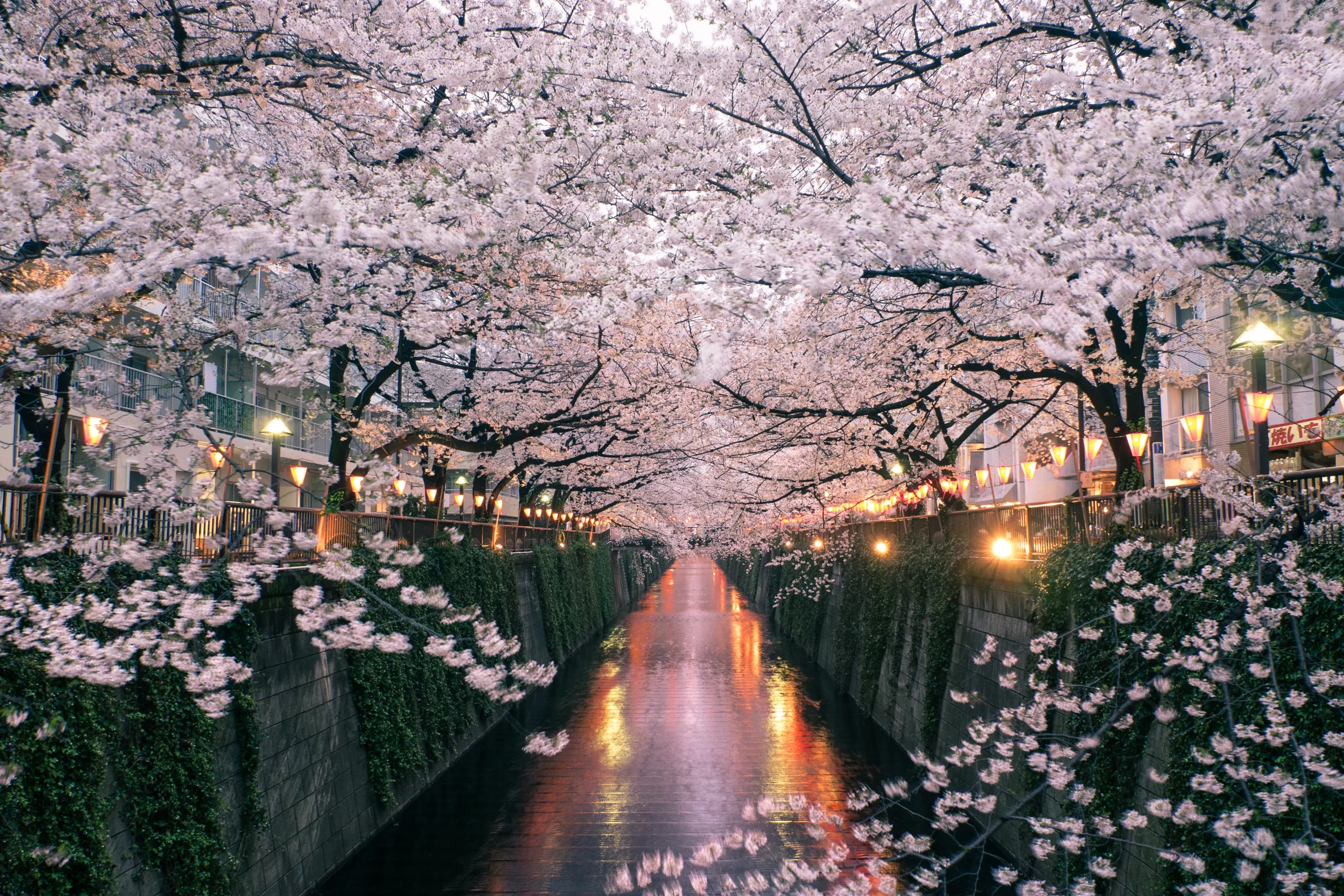Japan is known around the world for its beautiful cherry blossom trees, or Sakura in Japanese. These delicate pink and white flowers bloom for a short period each spring, filling the country with colour and fragrance. For the Japanese people, cherry blossoms are not just a beautiful sight but a symbol of renewal and the transience of life. In this blog, we’ll explore the serenity of Japan’s cherry blossom trees, their significance in Japanese culture, and where to see them in bloom.
The History of Cherry Blossom Trees in Japan
Cherry blossom trees have been an integral part of Japanese culture for centuries. They were first brought to Japan from China in the 7th century as a gift from the Emperor of China to the Emperor of Japan. Over time, the trees became a symbol of Japanese culture and aesthetics.
In the 9th century, the practice of hanami, or cherry blossom viewing, became popular in Japan. People would gather with friends and family under the blooming trees to appreciate their beauty and celebrate the arrival of spring. Today, hanami is still a beloved tradition in Japan, and people flock to parks and gardens throughout the country to view the cherry blossoms.
The Significance of Cherry Blossoms in Japanese Culture
In Japan, cherry blossoms are more than just pretty flowers. They represent the fragility and transience of life, a reminder that all things must come to an end. This philosophy, known as mono no aware, is a central concept in Japanese culture.
Cherry blossoms are also associated with the samurai, Japan’s warrior class. The blossoms’ short life span, which can be as little as a week, was seen as a reflection of the samurai’s fleeting existence. The samurai often wrote poetry about the cherry blossoms and used them as a motif in their art.
Where to See Cherry Blossoms Trees in Japan
If you’re planning a trip to Japan during cherry blossom season, there are several places where you can see the trees in bloom.
One of the most popular destinations is the city of Kyoto, which is known for its many temples and gardens. The Philosopher’s Path, a picturesque trail that runs alongside a canal, is lined with cherry blossom trees and is a popular spot for hanami.
In Tokyo, the Shinjuku Gyoen National Garden is a must-visit destination for cherry blossom viewing. The garden has over 1,000 cherry blossom trees, including several rare varieties. Yoyogi Park, located in the heart of the city, is another popular spot for hanami.
If you’re looking for a more remote location, head to the northern island of Hokkaido. The city of Sapporo is known for its cherry blossom trees, which bloom later than in other parts of Japan due to the colder climate. The Goryokaku Park, a former military fortress, is a popular spot for cherry blossom viewing.
Cherry Blossom Festivals in Japan
Many cities in Japan hold cherry blossom festivals, or Sakura matsuri, during the blooming season. These festivals feature food stalls, live performances, and other activities, making them a fun way to experience Japanese culture and celebrate spring.
One of the most famous festivals is the Hirosaki Cherry Blossom Festival, which takes place in the city of Hirosaki in Aomori Prefecture. The festival features over 2,500 cherry blossom trees and attracts over 2 million visitors each year.
In Tokyo, the Ueno Cherry Blossom Festival is a popular event held in Ueno Park. The festival features over 1,000 cherry blossom trees, as well as food stalls, traditional Japanese music and dance performances, and more.
In the end, the cherry blossom season in Japan is truly a unique and special time of year, where visitors from all over the world can experience the beauty and serenity of the country’s iconic cherry blossom trees. From bustling cities to the quiet countryside, the cherry blossom season transforms Japan into a pink and white wonderland, providing a truly unforgettable experience. So, if you’re looking for a magical and unforgettable experience, plan your visit to Japan during the cherry blossom season and witness the beauty of these breathtaking trees for yourself.

